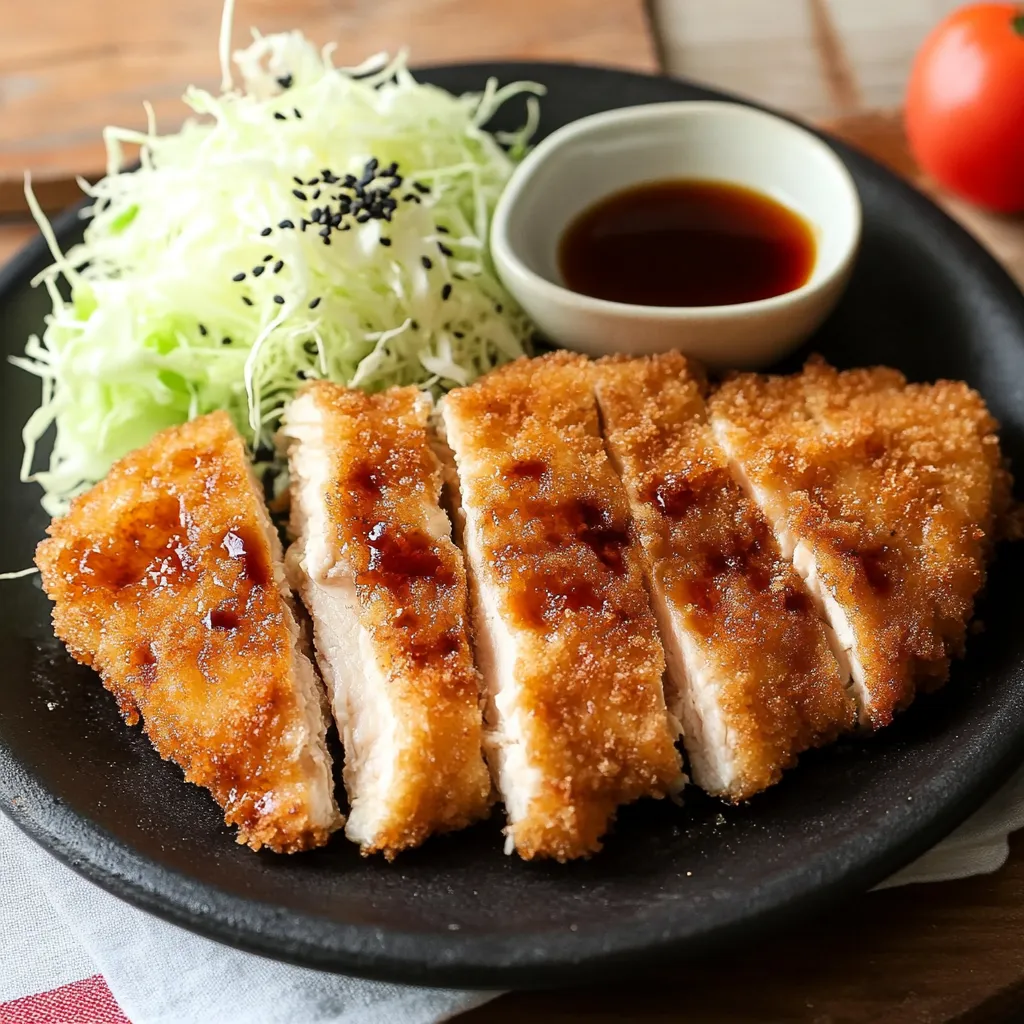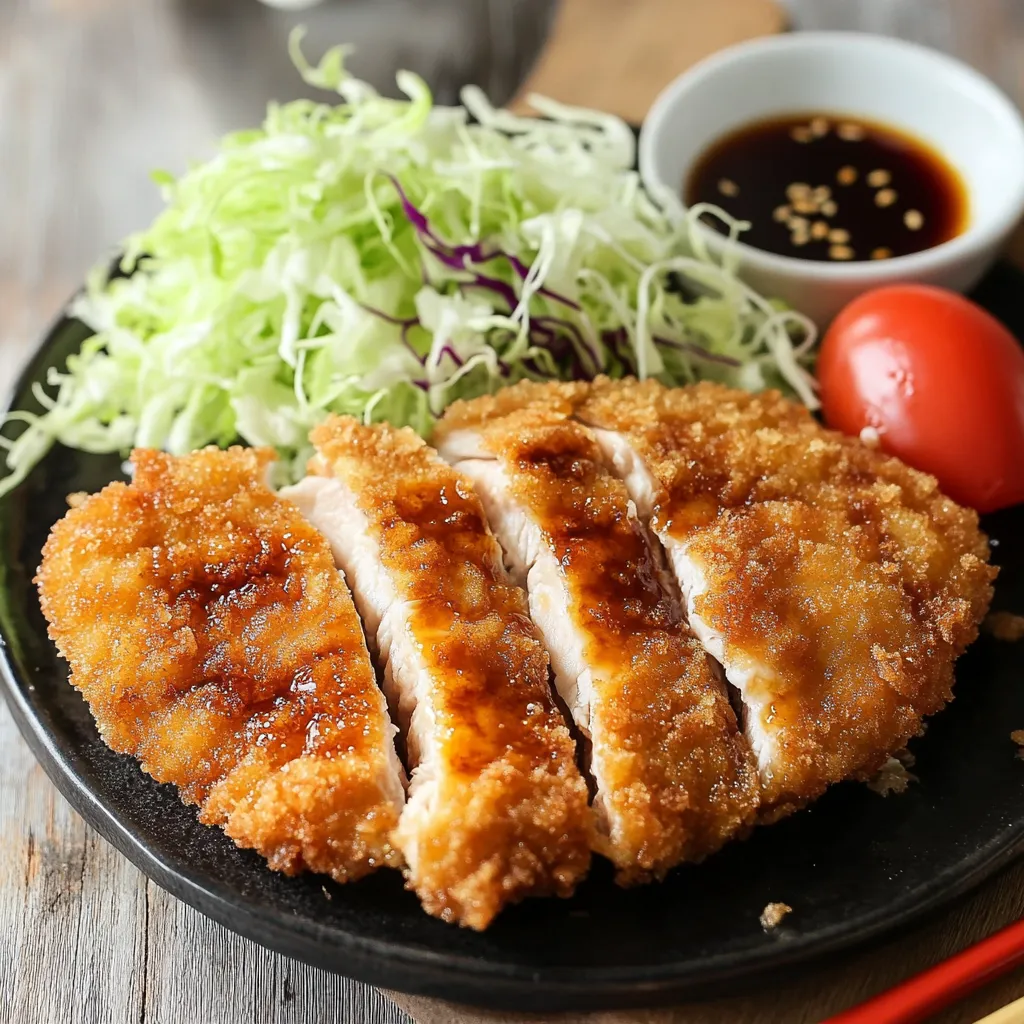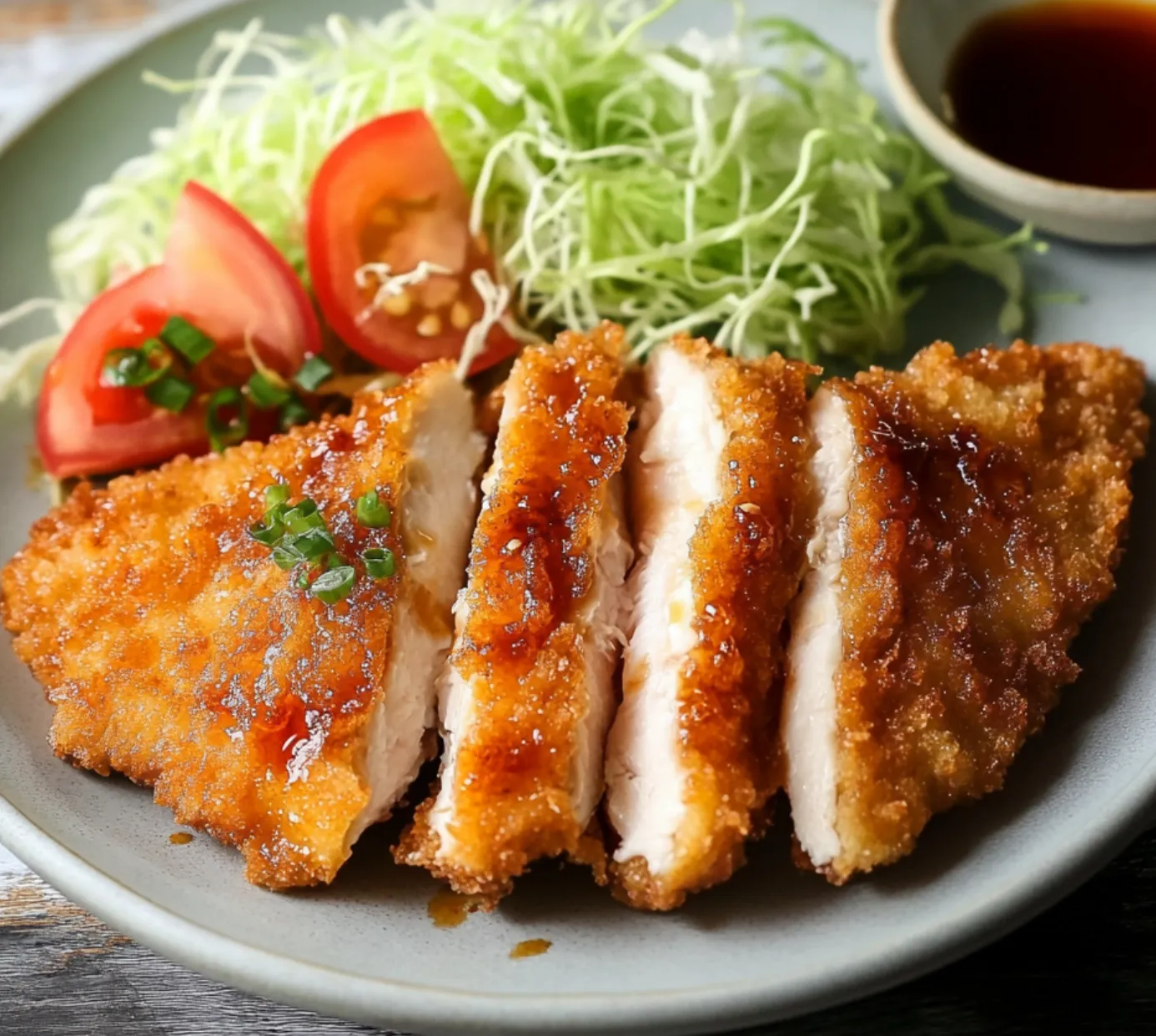 Pin it
Pin it
Crunchy outside, juicy inside—that's what makes Chicken Katsu so special. This Japanese favorite turns plain chicken breast into an amazing cutlet that's way better made at home than anything you'll get when eating out.
I stumbled on this dish while learning about Japanese cooking at home, and now it's my go-to way to make boring chicken breast totally mouthwatering. You'll know you've nailed it when you hear that first bite crack.
Crucial Ingredient Breakdown
- Boneless, skinless chicken breast: Pick a fresh one around 270g for optimal taste. Cut off any fat before you start cooking.
- Diamond Crystal kosher salt: Works better than table salt because its lighter crystals season the meat more evenly.
- Freshly ground black pepper: Adds some kick and richness. Don't use pre-ground if you can help it.
- All-purpose flour: Makes a thin base layer that helps everything else stick properly.
- Panko (Japanese breadcrumbs): These fluffy, light crumbs give you that amazing crunch. Make sure they're fresh.
- Large egg: Works as the glue for your coating. Should weigh about 50g without the shell.
- Neutral oil (for the egg mixture): Just a dash thins the egg to make coating easier.
- Neutral oil (for frying): Go with vegetable or canola oil that can handle high heat. Pour enough to reach 1½ inches in your pan.
- Tonkatsu sauce: This sweet-tangy sauce is the perfect match for crunchy chicken.
- Shredded green cabbage (optional): Gives a fresh crunch contrast. Serve on the side to balance your meal.
- Japanese sesame dressing (optional): Rich and nutty, it's great drizzled over that cabbage.
- Tomato wedges (optional): Add some juicy freshness that cuts through the richness.
Step-by-Step Cooking Guide
- Butterfly the Chicken
- Put your palm flat on the chicken breast and cut sideways through it, opening it up like a book.
- Seasoning
- Sprinkle both sides with salt and pepper, then wait 10 minutes so the flavors can sink in.
- Breading Station
- Get three shallow dishes ready with flour, beaten eggs mixed with a bit of oil, and panko.
- Coating Process
- Roll chicken in flour and shake off extra. Dunk in egg mix, let it drip. Push firmly into panko to cover completely. Let it sit 5 minutes so coating sets.
- Frying Process
- Get oil to exactly 350°F (175°C) using a thermometer. Slip the chicken in gently—it should bubble right away but not go crazy. Cook 4-5 minutes each side till it's nice and golden.
- Resting
- Put it on a wire rack instead of paper towels so it stays crispy all around.
 Pin it
Pin it
My friend from Japan told me good katsu should "sing" when cut—that crackling sound means you've got the perfect crust. Her trick was pressing the panko coating twice to get maximum crunchiness.
More Key Points to Remember
- Temperature Management: Watch your oil temp closely—too hot and you'll burn the outside while the inside stays raw. Too cold and it'll soak up oil and get soggy.
- Breading Technique: Use your left hand for dry stuff and right hand for egg. This stops you from getting those clumpy fingers and makes the coating smoother.
Smart Storage Methods
Let it cool all the way before putting in the fridge or freezer to keep it crunchy. When reheating, use the oven instead of microwave to bring back that crispiness.
Best Way to Serve
Slice your katsu at a slight angle for the nicest look, and don't wait around—serve it right away while it's still super crispy.
Making Great Sauce
Store-bought tonkatsu sauce works fine, but you can mix Worcestershire sauce, ketchup, and soy sauce for a tasty homemade version.
After making katsu hundreds of times, I've learned that taking your time leads to the best results. Getting the oil just right, being careful with the coating, and letting it rest properly turns this simple dish into something amazing. The secret to great katsu is balance—crispy outside, moist inside, and that satisfying crunch that makes everyone at your table grin.
 Pin it
Pin it
Frequently Asked Questions
- → Can I cook chicken katsu in the oven?
- Absolutely, there's a baked option that uses less oil but keeps the crunchiness!
- → How do I store and warm up leftover katsu?
- Keep it in an airtight container for 2 days in the fridge or freeze up to 1 month. Reheat at 350°F for 15-20 minutes if chilled, or 30 minutes if frozen.
- → Why is oil added to the eggs?
- It helps the coating stick better and keeps the chicken juicy while cooking.
- → What oil temperature is best for frying katsu?
- Stick to 340°F (170°C) for a golden, crispy crust and evenly cooked chicken.
- → What goes well with chicken katsu?
- Cabbage salad with sesame dressing, tonkatsu sauce, and a side of rice are classics!
